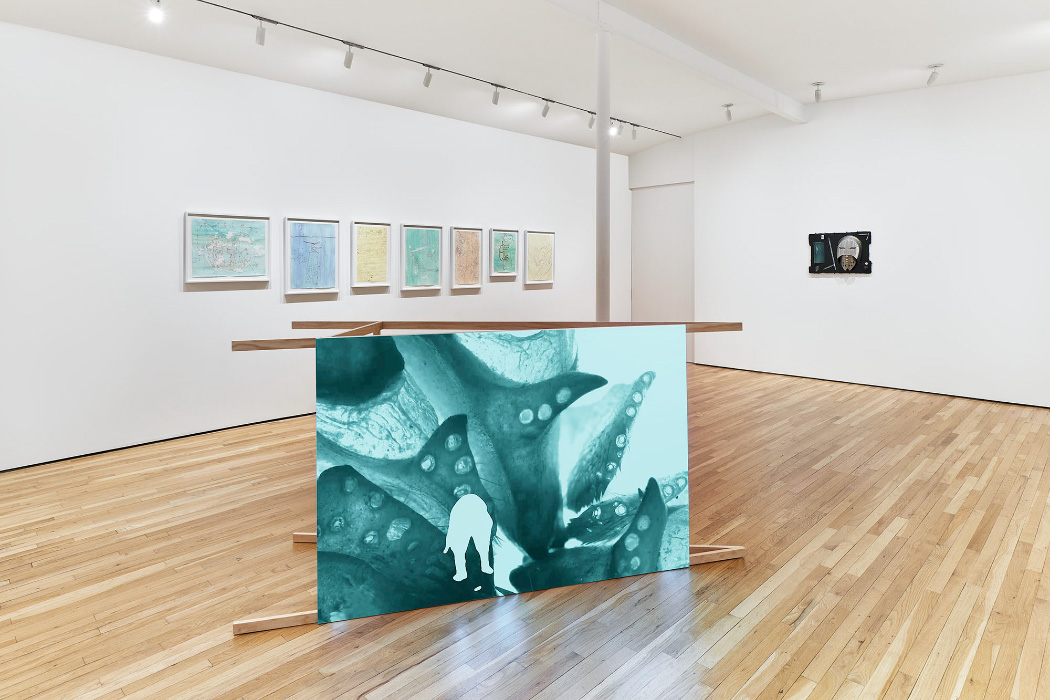
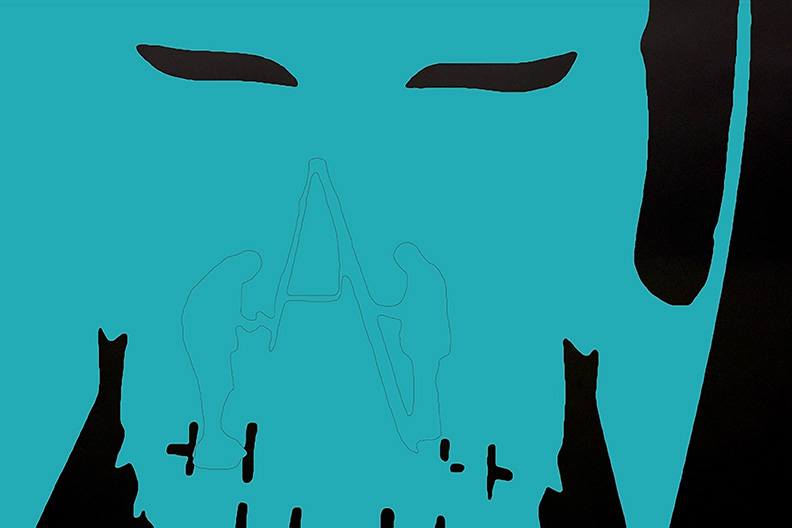
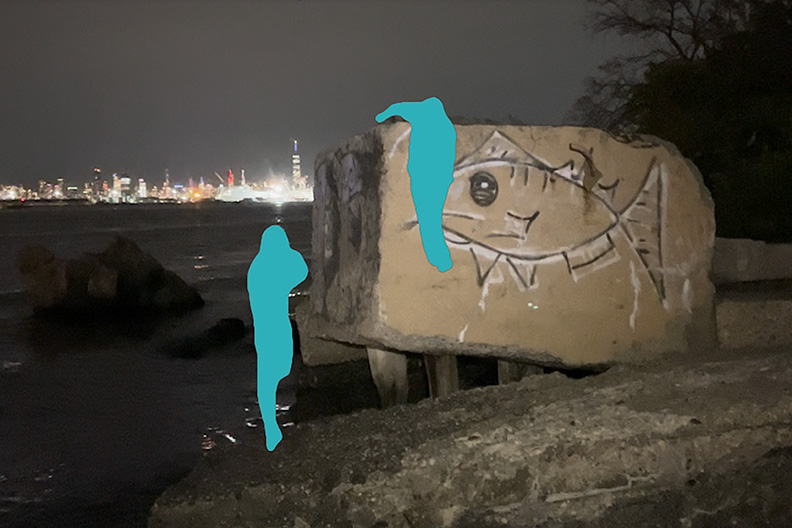
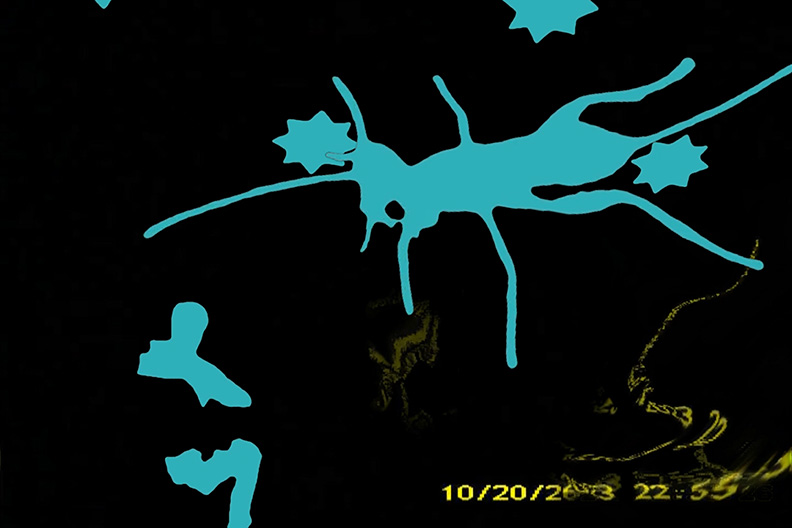
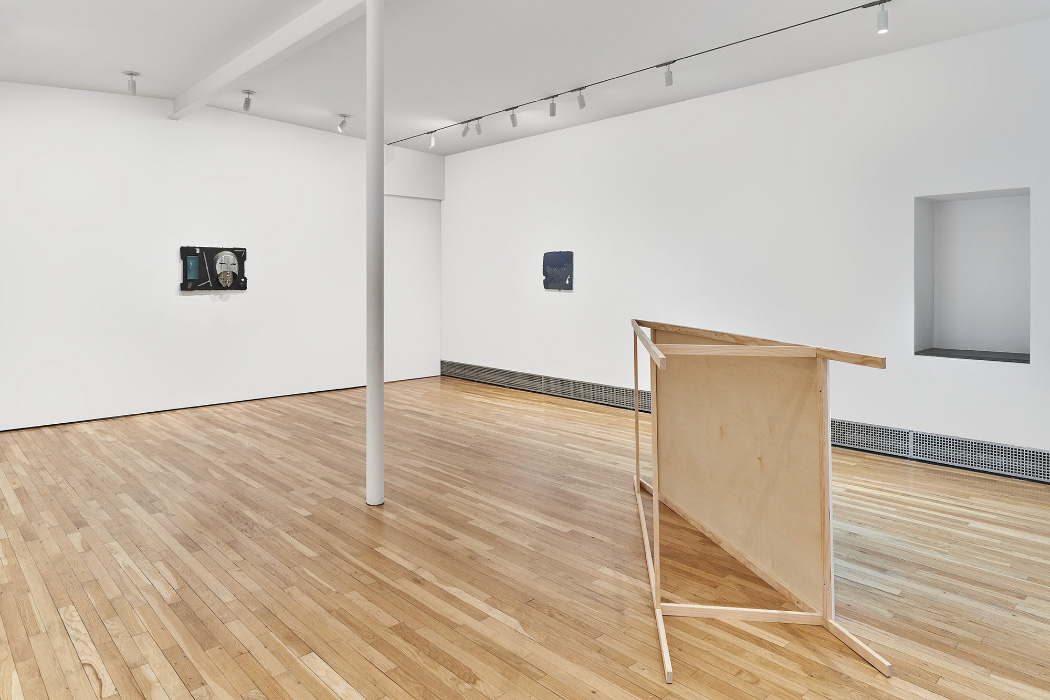
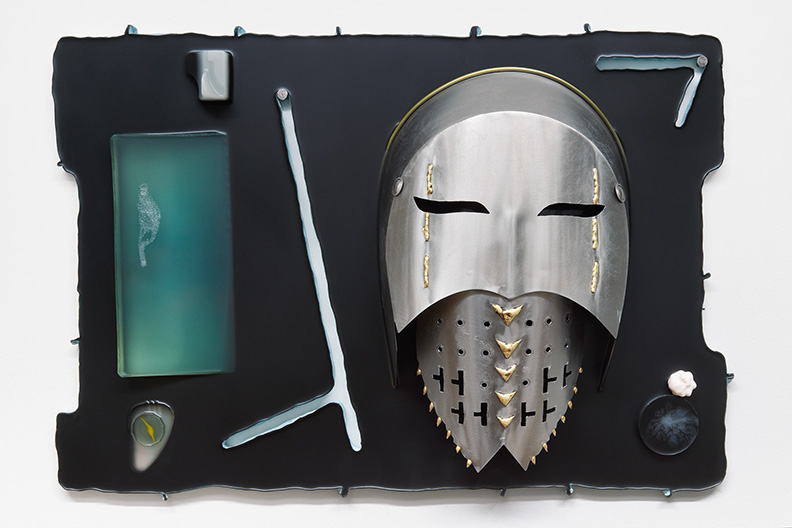
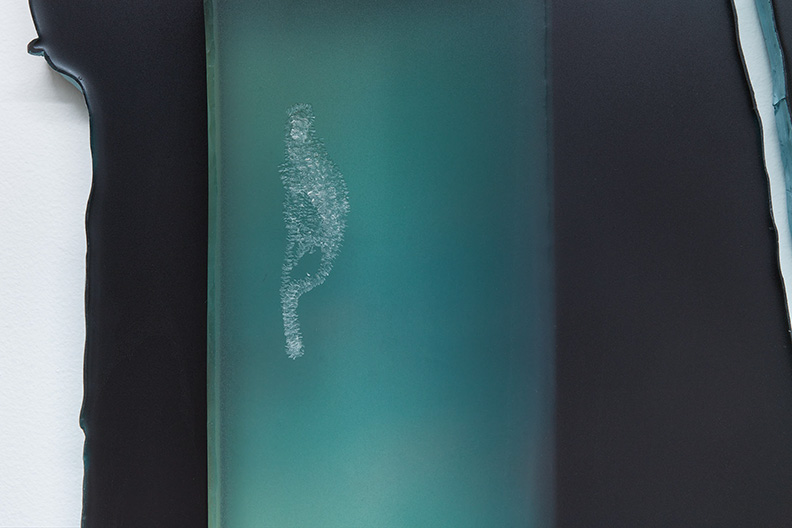
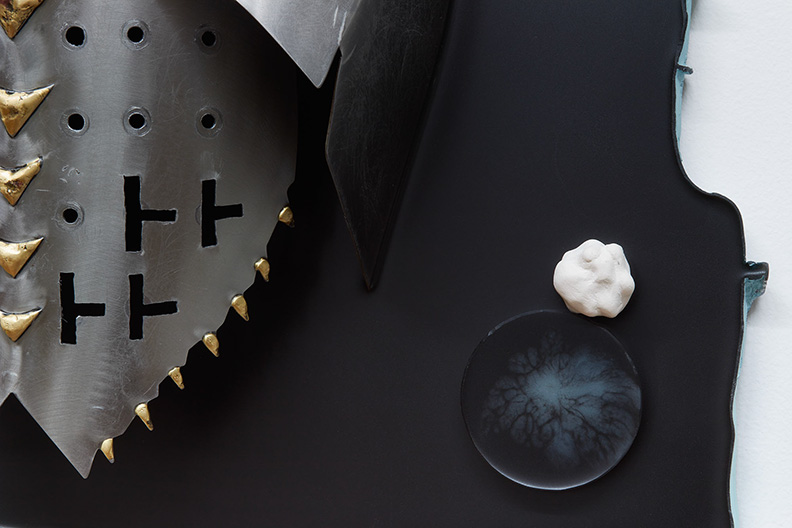
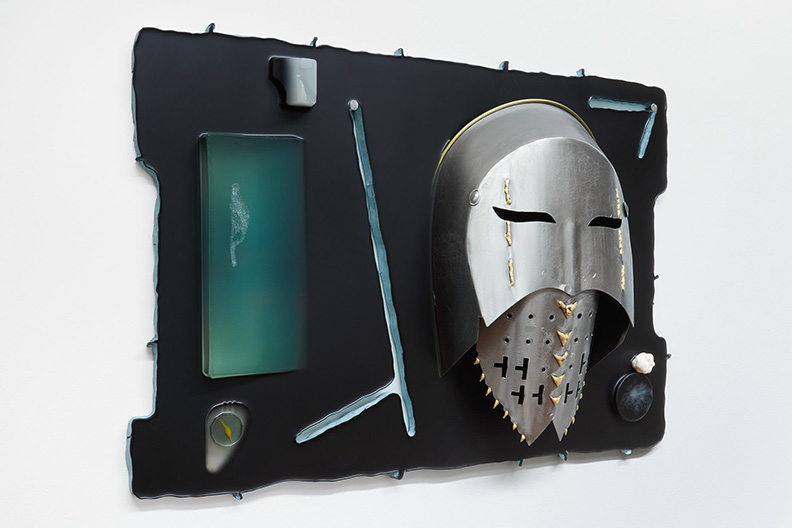
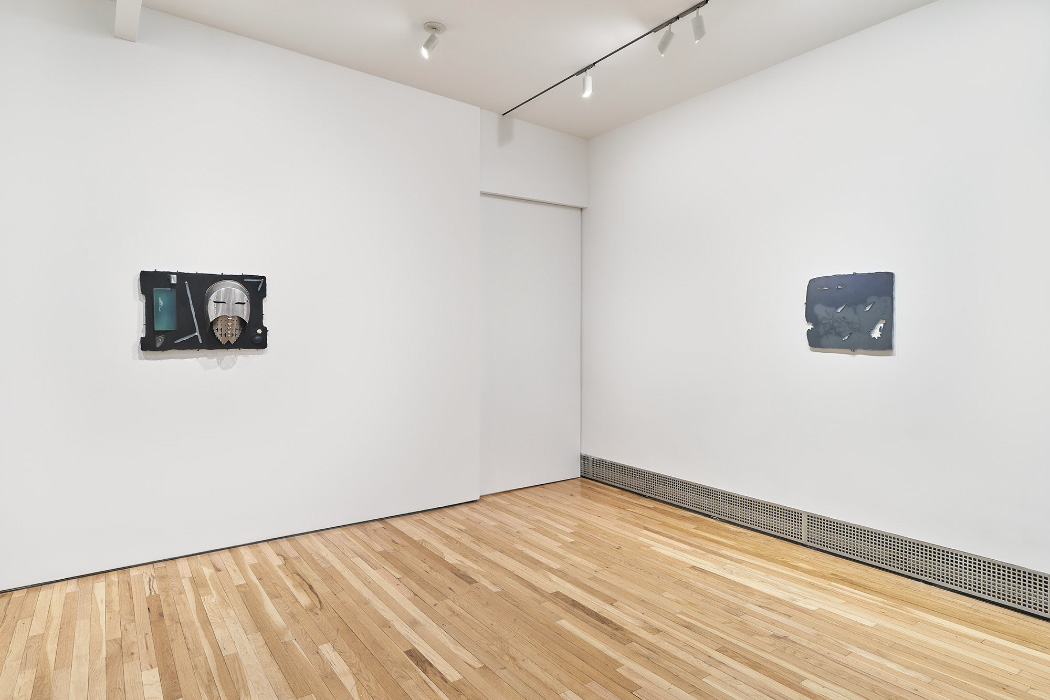
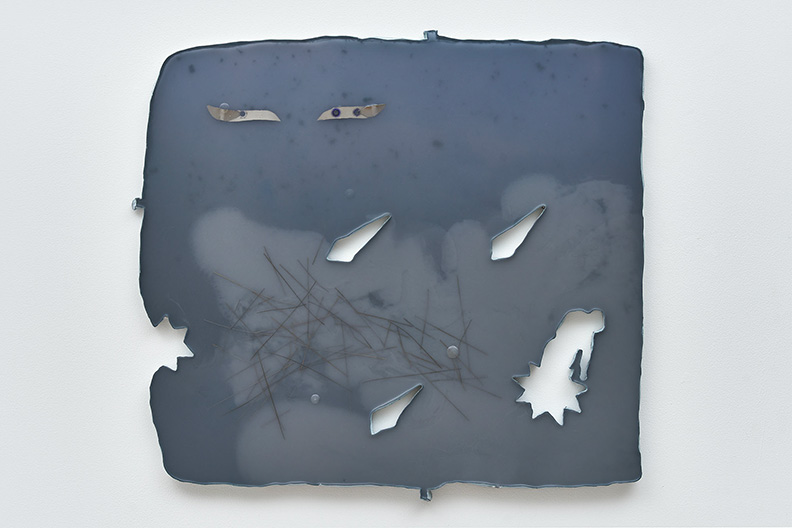
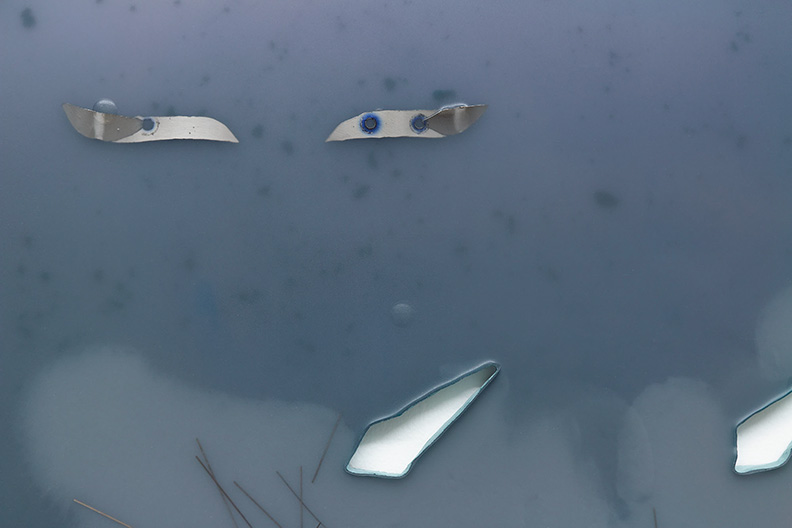
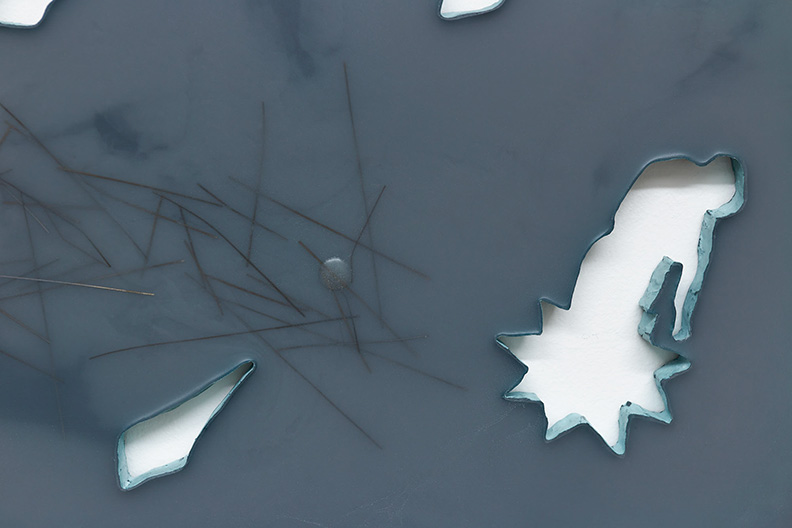
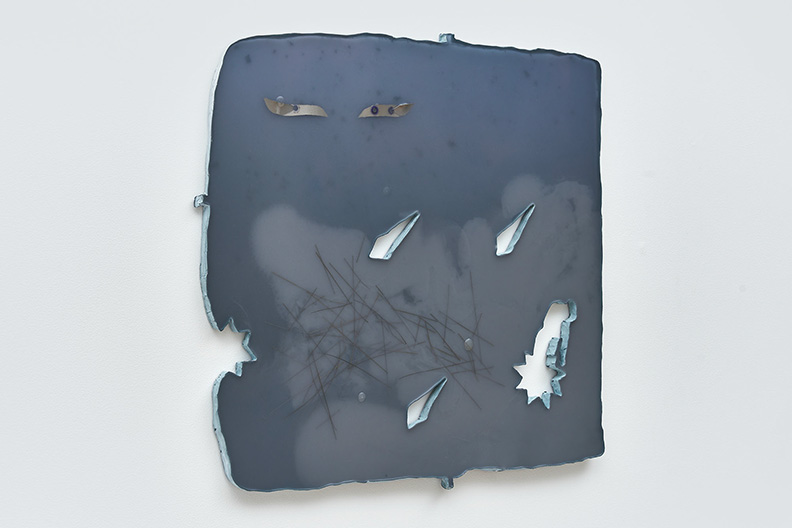
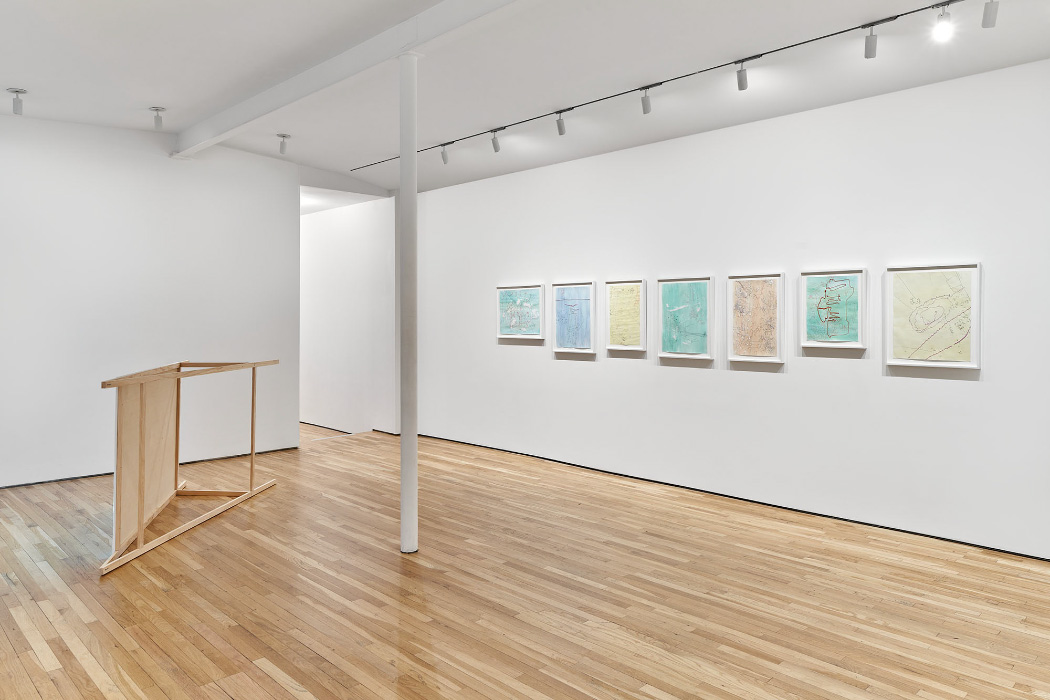
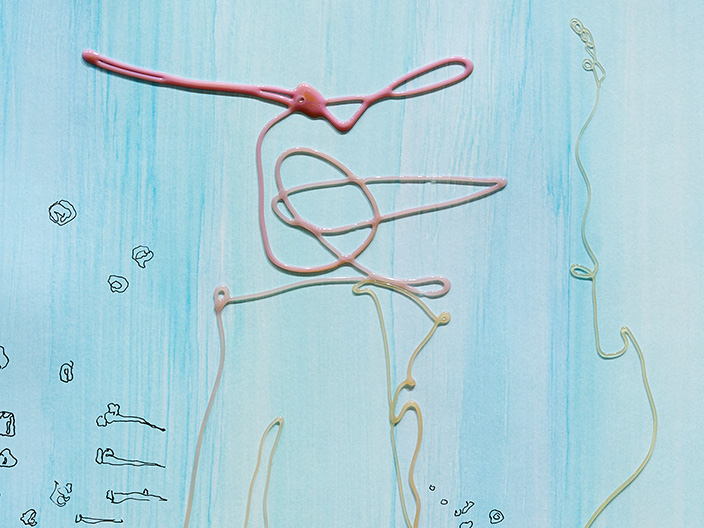
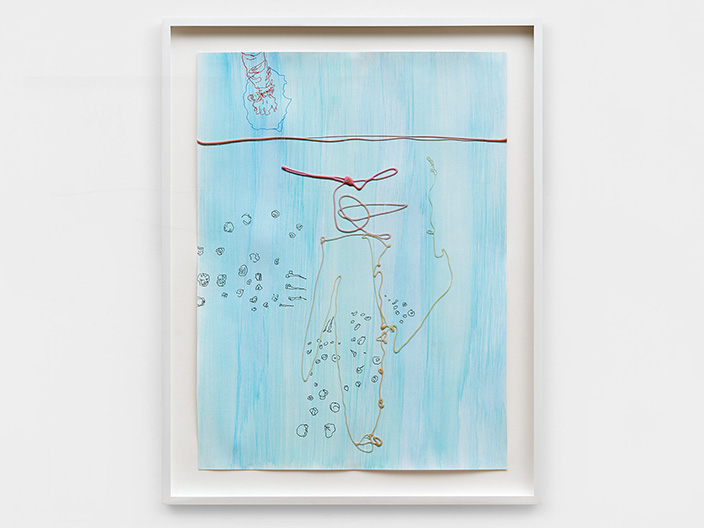
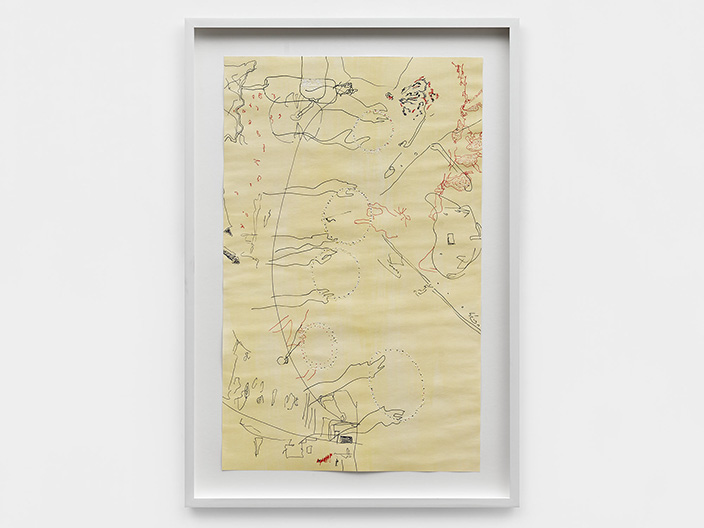
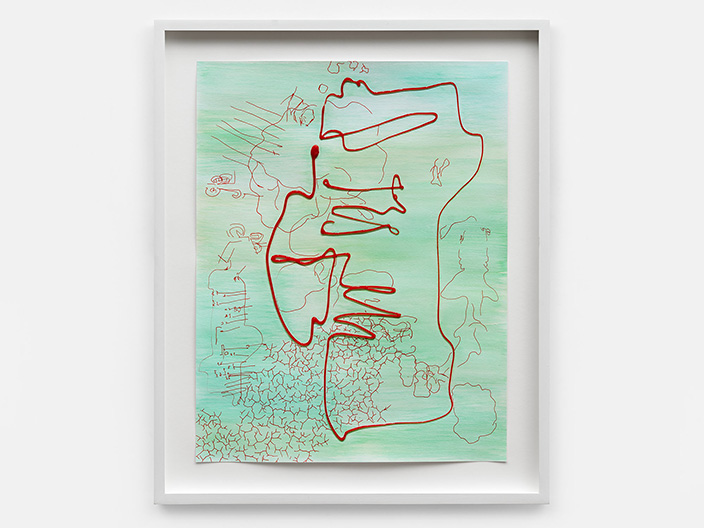
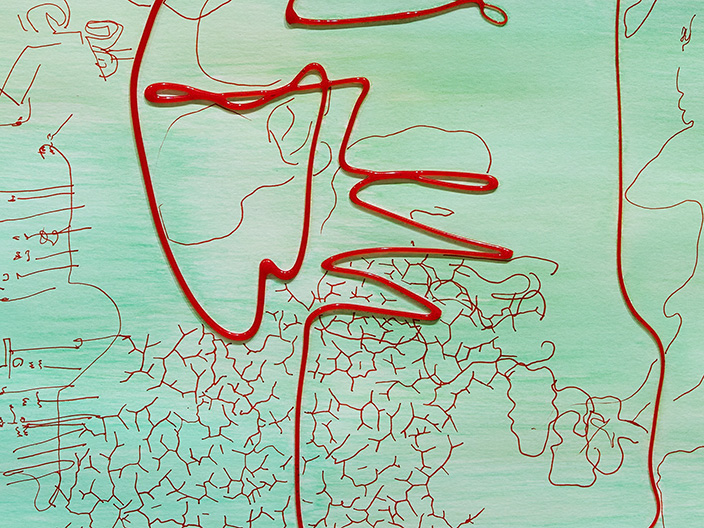
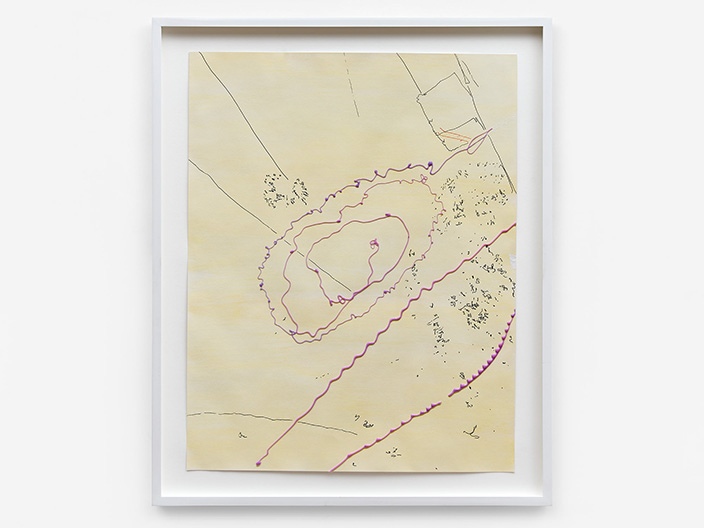
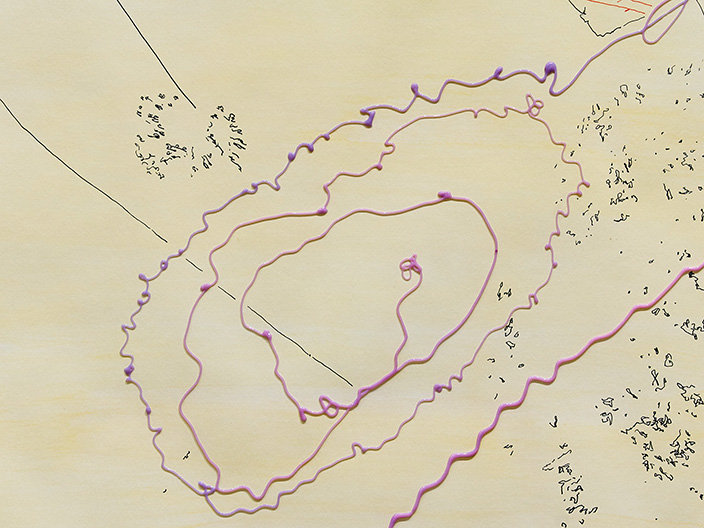
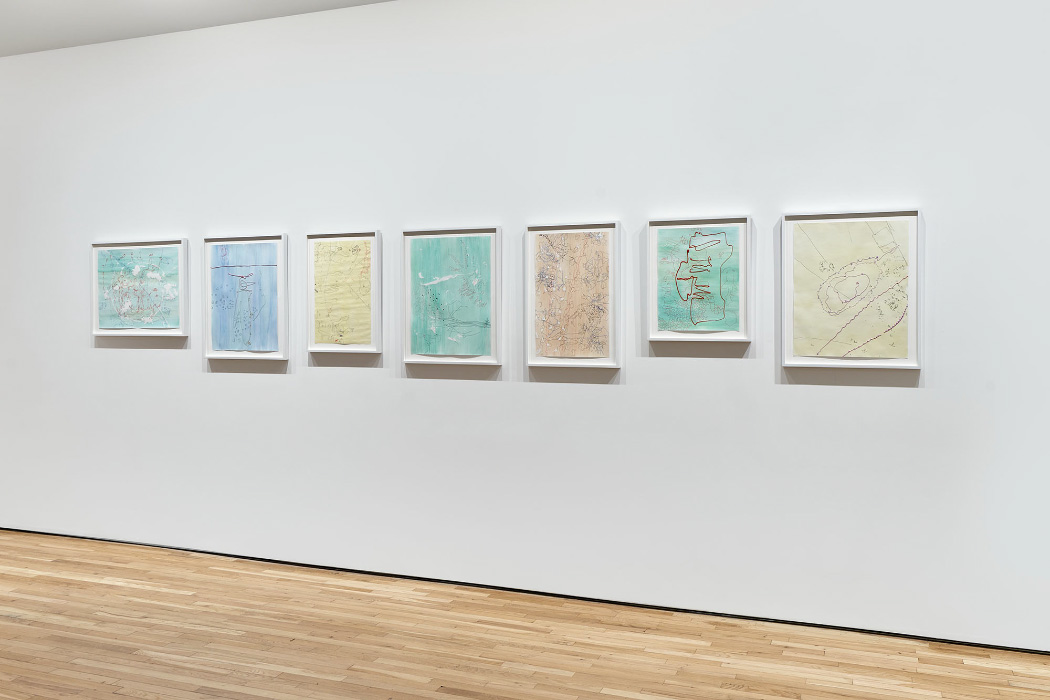
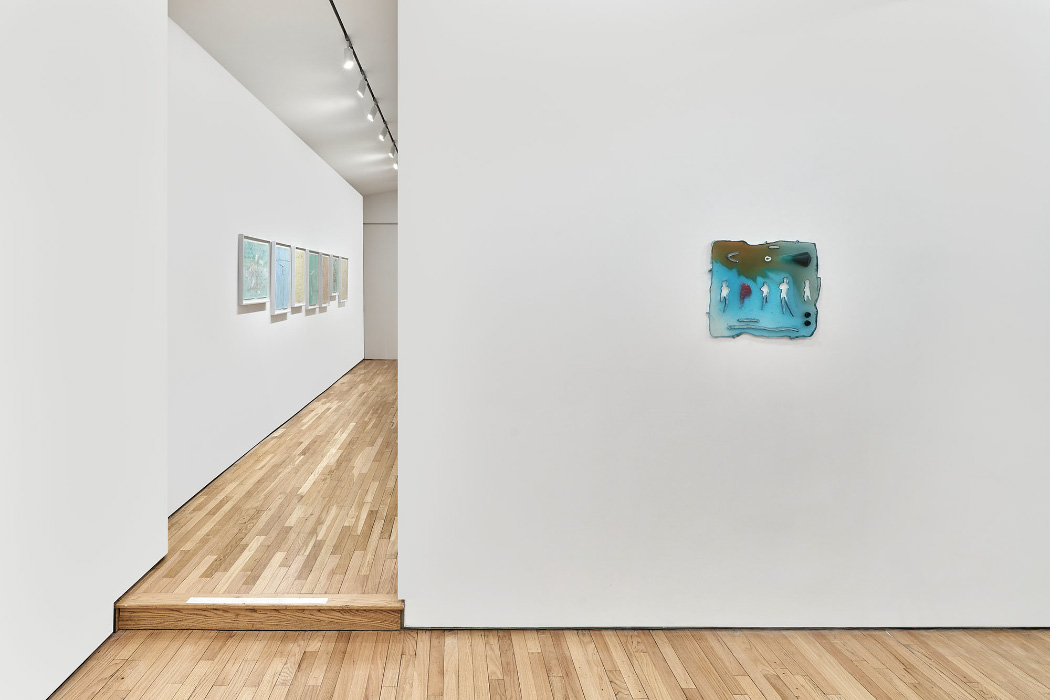
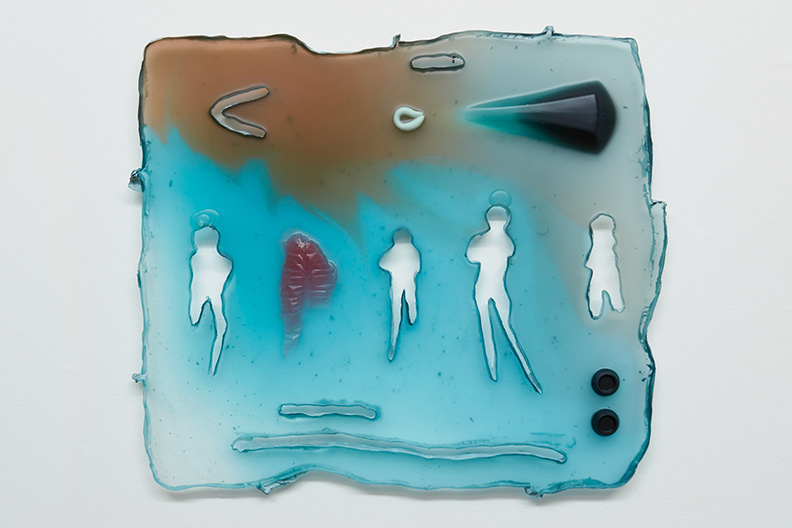
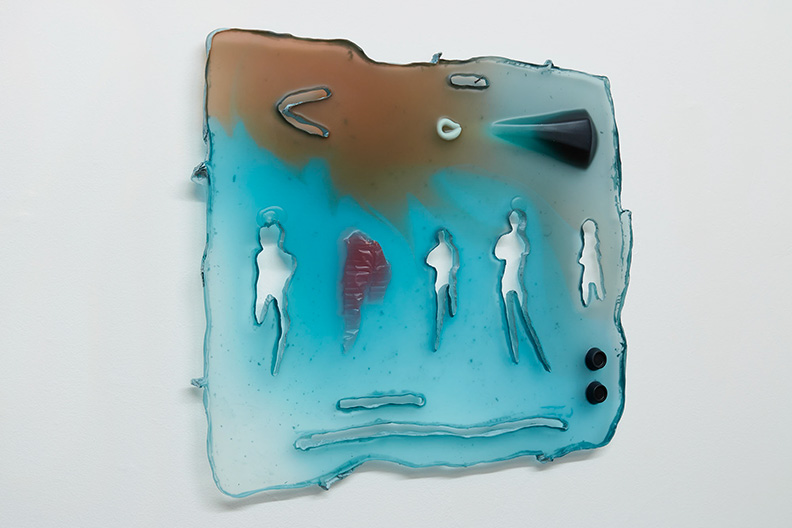
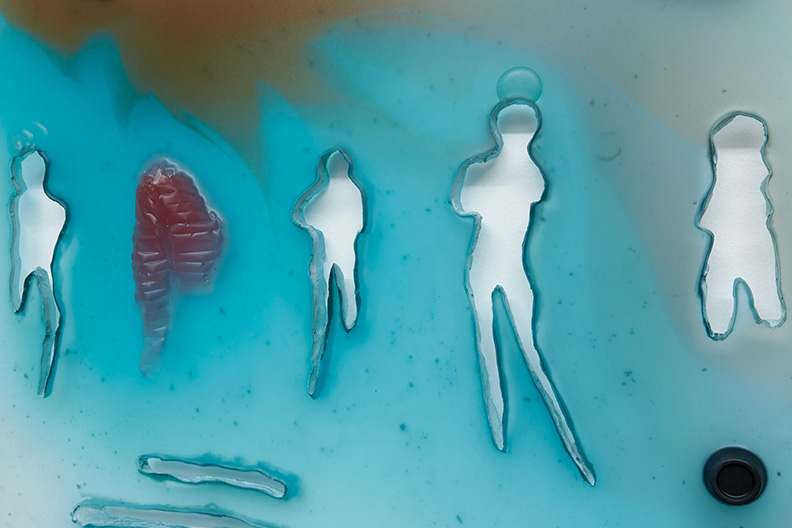
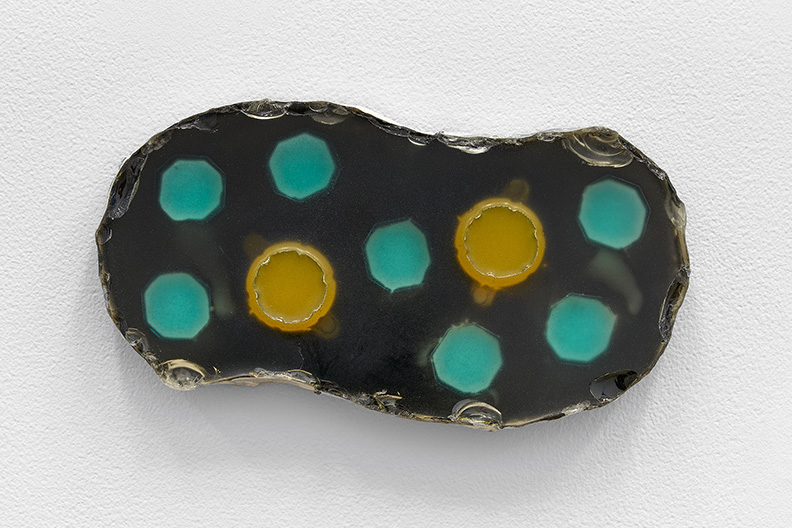
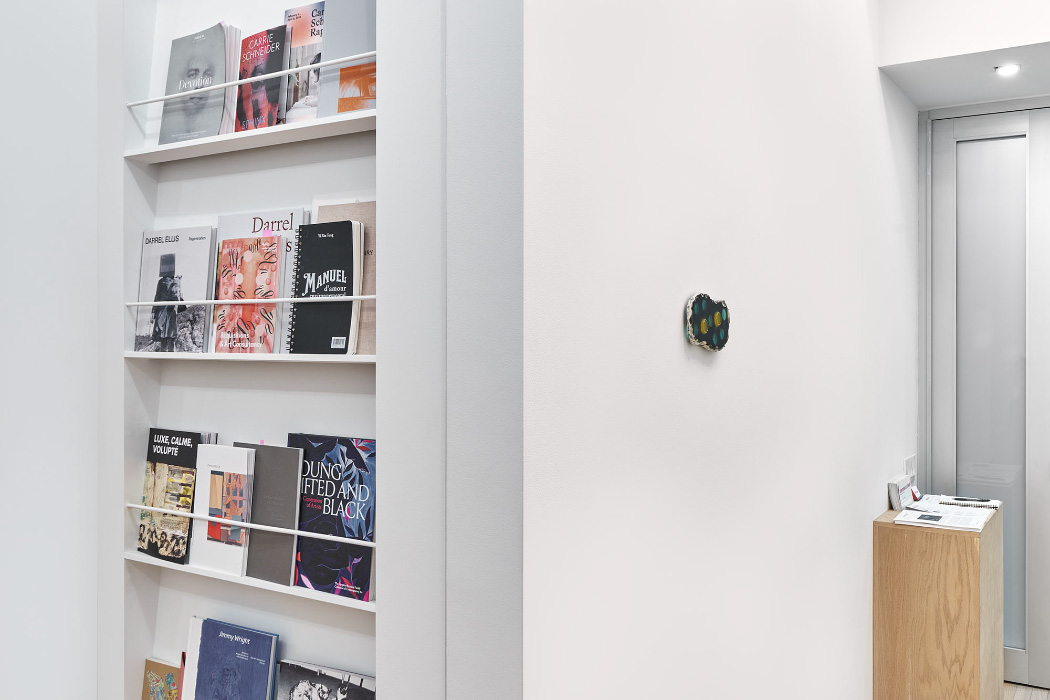
                             |
| Taoist Punk – Nocturnal Reveries of the Outdoors at a Desk (2023-24) still, video (color, sound), 11’39”, (trailer, 1’17”) | Horseshoe Mask (2024), stainless steel, brass, resin, porcelain, pigment, 28 x 19 x 4 in | Stargazer (2024), stainless steel, resin, broken jeweler's saw blades, porcelain, pigment, 20 x 18 x 0.5 in | Horseshoe Suicide (2023) detail, ink, glue, and watercolor on paper, 26 3/4 x 21 in | Kensico Reservoir (2023), ink, engraving, and watercolor on paper, 25 x 17 in | Anatomy of a Living Fossil (2023), ink, glue, and watercolor on paper, 22 x 18 in | Cold Water Green (2023), ink, glue, and watercolor on paper, 26 1/4 x 21 1/2 in | Sea Gate (2023), clay, resin, epoxy clay, pigment, 19 x 17 x 2 in | Metaphysical Kindness (2022-23), porcelain clay, epoxy resin, pigment, 9 x 6 x 1 in | |||
| Taoist Punk | |||||||||||
| 19/01/23-02/03/24. Candice Madey, New York City | |||||||||||
| New York, NY — CANDICE MADEY is pleased to announce Taoist Punk, the gallery’s second solo exhibition of Yi Xin Tong, presented in the gallery’s 1 Rivington Street location. Exhibiting works on paper, sculpture in resin, metal, and clay, and a video installation, Taoist Punk explores Tong’s practice of “Metaphysical Kindness,” a practice of inhabiting our environment with greater sensitivity.
Tong defines “Metaphysical Kindness” as a general goodwill that is not driven by goals nor values, but rather is rooted within an awareness of our limited knowledge of the world. His philosophy runs counter to human-focused environmentalism, seeking instead to observe the poetic moments of nature’s willful resilience. A core element of his life and art practice is time spent in spaces of urban wildness, where Tong witnesses the negotiations among species and the fissures between primordial forces and urbanization. The artist views places such as Steeplechase Pier in Coney Island, Jamaica Bay, Hudson Riverbank, and Breezy Point as integral extensions of his studio. A new suite of watercolor, ink, and glue drawings depict abstract spatial interactions that capture Tong’s affinity with the playful unruliness of the outdoors. They begin with observations of nature, as most of his work does. Back in the studio, Tong covers the paper’s surface with a rough brush of pale color. He then “draws” with a resin-like glue which is either left intact or removed to leave subtle tears. Subsequent pen marks are limited to blue, red, and black, which are technical colors to Tong—for writing, note-taking, and sketching. Marks read as calligraphic, at the intersection of representation, abstraction, and language. The series continues a body of work that originated at the Today Art Museum in Beijing in 2022, in which he adapted the linear forms of the drawings into large-scale laser projections. In another body of wall-based sculptures made from resin, metal and clay, Tong captures his observations of natural phenomena, urban detritus, marine life in layered works that suggest a sedimentary record of human activity. The tablet-esque forms are punctuated with rough-edged apertures, color planes, and uncanny text-displays that simultaneously read as digital or archaic devices. The title of the show, Taoist Punk, refers to a single channel video installation at the center of the exhibition: Taoist Punk – Nocturnal Reveries of the Outdoors at a Desk (2023-24). The video renders specious, uncertain scenarios acted out in the dark of night in New York City. Utilizing artificial intelligence tools, Tong extracts and erases visual elements so that human movements pair with seascapes and marine creatures in the form of a pantomime. Breathing holes and eyes are hand-cut in the metal horseshoe crab sculpture, altering it into a medieval dueling mask. When wearing it, like the technique of head swap in acting, one is endowed with the right and almost magical power to be someone else, a freedom. The edited choreography captures a seemingly natural symbiosis among species. Central to the work is the act of seeing in the night and a material representation of illumination – presenting the glowing skins of extraordinary marine animals and bonfires that light up mulberry trees on the Hudson Riverbank. Monochromatic figures, drawn from video footage of workers repairing a wall in Tong’s apartment and of the artist himself, move aqueously over changing images of outdoor imagery. Tong views this imperceptible membrane between the figures and scenes as the fourth wall in theater, but in this case, the viewers are behind it, as if watching from backstage. Recontextualized as readymade improvisation, human figures and devices synchronize – pulsing and merging at the same pace. Evolved from Tong’s long-term exploration of noise music, the unceasing church organ-sounding music creates a virtually religious ambience. Without voice nor text, the tactile conversation among these elements is where the reveries wander. Resonating with Stephen Wright’s definition of escapology as an “everyday elusiveness, leakage and doing-otherwise,” Taoist Punk is a metaphysical inquiry about wilderness that is non-rational, ephemeral, and driven by curiosity and humor. |
|